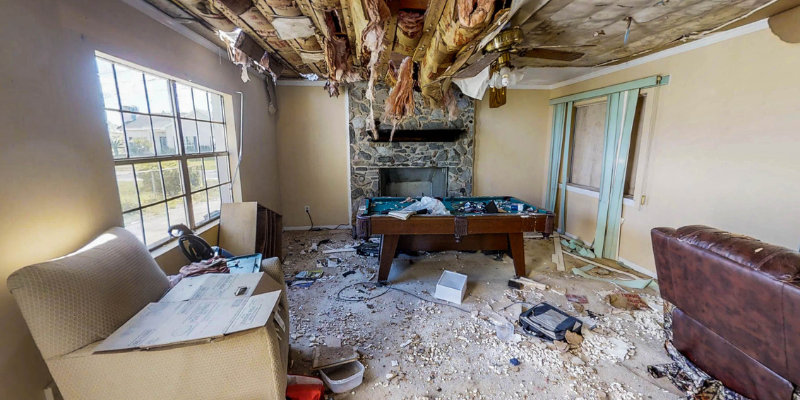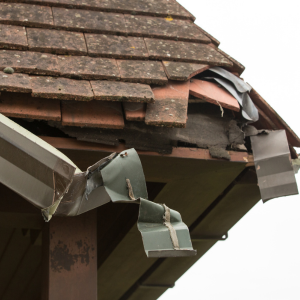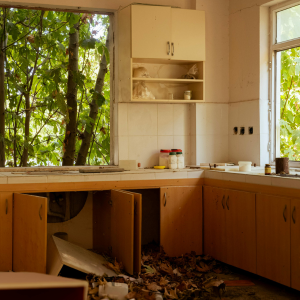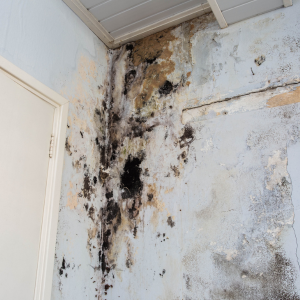
The Oregon Residential Landlord and Tenant Act outlines what landlords and tenants can do about damage to rental property. This law gives landlords clear instructions on handling damage caused by tenants.
Landlords must distinguish between typical wear and tear and damage beyond that. Normal wear and tear is not taxable to the tenant, but significant damage may result in deductions from the security deposit or direct compensation from the renter.
Landlords are required by law to send renters written notification of any damages and an itemized list of deductions from their security deposit within 31 days of the end of the lease. If the landlord doesn’t follow these rules, they could get in trouble with the law, pay fines, or pay for damages.
Landlords need to take detailed pictures or videos of the property’s condition at both move-in and move-out so that they can prove their claims against renters if there is a disagreement. By knowing these legal responsibilities, landlords in Oregon can better manage their rental properties and make sure they follow state regulations about tenant damage.
Understanding Tenant Responsibilities for Property Damage in Oregon
Understanding tenant duties for property damage is essential for Oregon landlords managing complex real estate properties. Oregon law requires tenants to keep rental properties clean and habitable and avoid and repair damage beyond normal wear and tear.
Normal wear and tear refers to gradual deterioration from frequent use, such as faded paint or mild carpet fraying. However, tenants may be held accountable for significant damage caused by negligence or malice.
Examples of damage include broken windows, large holes in walls, or significant stains on carpets caused by spills or pets. Landlords must be familiar with these distinctions to assess damages accurately when a tenant vacates the property.
If a landlord believes the renter has caused undue harm, they can seek reimbursement through security deposits or small claims court if necessary. Documenting the property’s condition before and during tenancy is crucial to support claims for tenant-caused damages.
Comprehending these responsibilities safeguards landlords and guarantees tenants know their duties under Oregon’s landlord-tenant legislation.
Writing a Comprehensive Lease Agreement to Prevent Property Damage
If a landlord in Oregon wants to stop tenants from damaging their property, they must draft a thorough lease agreement. Tenant obligations and expectations about upkeep and care of the property should be spelled out in a well-written lease.

It is essential to include specific language in the lease that explains the difference between regular wear and tear, damage caused by the tenant, and the steps they must take to report and fix damage. Additionally, the lease should include rules about changes and improvements, making it clear if and how renters can change the property.
Including a security deposit clause that outlines how funds will be used in case of tenant damage is also vital. Landlords should ensure compliance with Oregon’s landlord-tenant laws by providing clear terms about inspections, property access, and notice requirements.
By including these clauses in the lease, landlords can minimize property damage and better protect their real estate investment by giving tenants clear guidance. Here’s how ASAP Cash Buyers can help.
Strategies for Mitigating the Risk of Tenant Damage to Rental Units
Oregon landlords can preserve their real estate investments by implementing techniques to reduce tenant damage to rental properties. Background checks and landlord references are essential for tenant screening to determine reliability and responsibility.
Clear rental agreements determine who is responsible for repairs and what happens if something gets broken. Landlords can find problems early and fix them before they worsen by regularly inspecting their properties.
Landlords might also consider requiring security deposits or renters’ insurance to cover potential repair costs arising from tenant damage. Establishing open communication channels with tenants fosters a cooperative relationship, encouraging tenants to report maintenance issues promptly.
Moreover, supplying tenants with instructions on the appropriate maintenance and utilization of appliances and facilities can avert unintentional harm. By adopting these preventive strategies, landlords in Oregon can significantly diminish the probability of tenant-induced damage to their rental properties.
Common Types of Tenant-caused Damage in Oregon Rentals
In Oregon, landlords often encounter various types of tenant-caused damage in rental properties, which can significantly impact the overall condition and value of the real estate. Common issues include physical damage to walls, such as holes from nails or screws, and more severe cases where tenants have caused structural harm.
Flooring damage is also prevalent, with carpets frequently suffering stains or burns and hardwood floors experiencing scratches or water damage due to negligence. Kitchen and bathroom fixtures are susceptible to misuse, leading to broken tiles or damaged countertops, while plumbing systems may suffer from clogs or leaks caused by improper usage.
Appliances provided by landlords, like refrigerators and ovens, can be subject to wear and tear beyond everyday use if not appropriately maintained by tenants. Additionally, exterior elements such as doors and windows might sustain damage from forced entry attempts or a lack of upkeep.
Understanding these typical tenant-caused losses is critical for Oregon landlords needing legal guidance. Contact ASAP Cash Buyers to get the help you need.
The Role of Security Deposits in Covering Tenant Damages
Security deposits play a crucial role in safeguarding landlords in Oregon against potential tenant damage to rental properties. These deposits act as a financial buffer, allowing landlords to recover costs associated with repairing damage caused by tenants beyond normal wear and tear.
Oregon law says landlords can use security deposits to cover costs like damage, cleaning, and unpaid rent after the lease ends. It is essential for landlords to carefully record the condition of the property during both move-in and move-out inspections to show why any money was taken out of the security deposit.
Proper documentation helps prevent disputes between landlords and tenants regarding what constitutes allowable deductions under state regulations. Landlords must also provide an itemized list of deductions within 31 days after the tenant vacates the premises, ensuring transparency and compliance with Oregon’s landlord-tenant laws.
Landlords can better handle tenant-related problems and protect their investments by knowing their rights and duties regarding security deposits.
Landlord’s Rights and Obligations When Assessing Property Damage
In Oregon, landlords have certain rights and responsibilities when looking at damage to property that renters have caused. Under Oregon law, landlords can check on their rental properties to see whether any damage goes beyond regular wear and tear. This is called tenant damage.
To substantiate any claims against the tenant’s security deposit, landlords must meticulously record such damages using photographs and thorough descriptions. Landlords must, however, give adequate warning before entering the property for an inspection; unless there is an emergency, this usually entails at least 24 hours’ written notice.
After analyzing the damage, landlords can deduct the necessary repair costs from the tenant’s security deposit. Within 31 days of the lease expiring, they must give an itemized statement of these deductions.
If the damages exceed the deposit amount, landlords may pursue additional compensation through small claims court in Oregon. Landlords must adhere strictly to state laws regarding privacy and proper communication with tenants during this process to avoid legal complications.
Understanding these rights and obligations helps landlords and tenants ensure fair treatment and comply with Oregon’s landlord-tenant laws. If you’re ready to move on from a rental property, sell your house fast for cash in Oregon and nearby cities.
Steps for Documenting Tenant-Induced Property Damage
In Oregon, landlords have to take a few steps to ensure they follow the law and protect their investment when they document damage caused by tenants. Before renting out a house, landlords should carefully check it, ideally with the tenant present, to find any damage.
It is essential to take clear, detailed photographs or videos that capture the extent and nature of the damage; these visual records serve as crucial evidence if disputes arise. Landlords should also maintain comprehensive written documentation, including dated notes describing each instance of damage and its potential cause.
Statements from neighbors or maintenance staff who saw what happened could help the landlord’s case. Keep all your letters and emails about the condition of the property between you and your landlord. This will help you keep track of problems that keep happening.
Finally, calculating repair costs using professional assessments lends legitimacy and detail to the documentation process. Landlords in Oregon can efficiently protect their rights and handle tenant-related losses within legal boundaries by carefully following these measures.
Guidelines for Properly Charging Tenants for Damages
In Oregon, landlords must navigate specific legal guidelines when charging tenants for damages to ensure compliance with state laws. Understanding the distinction between normal wear and tear versus tenant-caused damage is crucial.

In contrast to minor scuffs or faded paint, landlords are only permitted to charge tenants for damages that exceed the regular use of the property, such as shattered windows, torn carpets, or wall holes. Property owners should scrupulously document the rental unit’s condition through detailed inspection reports and photographs before and after the tenancy to deduct repair costs from a security deposit.
Providing tenants with itemized statements of deductions, including receipts or estimates for repairs, helps maintain transparency and supports any claims against the security deposit. Oregon law requires landlords to return any remaining security deposit balance within 31 days after the tenancy ends.
Landlords need to know these rules so they don’t get into fights or have to go to court, and so they can make sure that renters pay for any damage they do to the property.
How Landlords Should Address Tenant Damage to Rental Property
Addressing tenant damage in Oregon rental properties is a crucial obligation for landlords. Landlords should inspect the property and take photos or videos to prove damages in court.
When figuring out who is responsible, landlords must be able to tell the difference between regular wear and tear and damage caused by a tenant. Once everything is written down, landlords should review the lease agreement terms. This is because it usually says how to handle damage and what a breach of contract by the renter means.
If the damage exceeds normal wear and tear, landlords have the right to use the security deposit to cover repair costs; however, they must provide an itemized statement of deductions within 31 days after tenancy ends. Should damages exceed the security deposit amount, landlords may need to pursue legal action through small claims court to recover additional costs.
Landlords should notify tenants as soon as possible of any problems they find, allowing them to fix minor damages on their own. By taking these precautions, landlords may manage property maintenance, minimize financial losses from tenant damage, and comply with Oregon’s landlord-tenant rules.
Insurance Considerations for Landlords Regarding Tenant Damage
When managing rental properties in Oregon, landlords must carefully consider insurance options related to tenant damage to protect their investments. Landlord insurance policies typically cover a range of risks, but understanding the specifics regarding tenant-caused damage is crucial.
Liability coverage and property protection are frequently included in standard landlord insurance; however, it may not necessarily cover all types of tenant damage. Landlords must confirm whether their policy covers intentional devastation by tenants or accidental damage.
Assess the need for additional endorsements or riders to protect against tenant negligence or malicious behavior. If tenant damage makes the property unusable, landlords may consider loss-of-rent coverage.
Consulting with an experienced insurance agent who understands Oregon’s real estate laws can help ensure that landlords select comprehensive coverage tailored to their specific needs and risks associated with renting out properties in this state.
Dispute Resolution Options for Landlords and Tenants Over Damages
Understanding the available resolution alternatives is crucial because property damage disputes between landlords and tenants are common in Oregon. Examining the lease agreement, which should specify who is responsible for property upkeep and any potential damages, is usually the first step.
Open communication between landlords and tenants can help resolve misunderstandings if a dispute arises. Mediation services offer a neutral platform where parties can negotiate a fair settlement without escalating tensions.
Oregon law also provides arbitration as an alternative dispute resolution method, allowing an arbitrator to make binding decisions on damage claims. For more formal proceedings, small claims court is an option for landlords seeking compensation for damages that fall within the monetary limits set by Oregon statutes.
Comprehending these channels can assist landlords in efficiently addressing tenant-related concerns while adhering to state legislation about real estate and rental properties.
Educating Tenants on Careful Use and Maintenance Responsibilities
In Oregon, educating tenants on their responsibilities for carefully using and maintaining rental properties is crucial for landlords aiming to minimize tenant damage and protect their real estate investments. By clearly outlining expectations in the lease agreement, landlords can help prevent misunderstandings about tenant obligations related to property care.
These duties are further reinforced by regular communication regarding appropriate maintenance procedures, such as promptly reporting defects and following instructions for utilizing fixtures and appliances. Offering instructional materials or holding walkthroughs at the beginning of a lease can arm renters with information about how to avoid frequent concerns like electrical or plumbing accidents.
Encouraging open dialogue also allows tenants to feel comfortable reaching out with questions or concerns before they lead to significant property damage. Proactive education helps maintain the property’s condition and fosters a cooperative landlord-tenant relationship that benefits both parties in Oregon’s competitive real estate market.
Can a Tenant Be Held Responsible for Damages
Landlords in Oregon have the legal power to hold tenants liable for damages beyond regular wear and tear. Understanding tenant damage is critical for landlords dealing with real estate management in this state.
Under Oregon landlord-tenant law, if a tenant causes damage to rental property through negligence or intentional acts, they are liable for repair costs. Damages that exceed ordinary use include broken windows, holes in the walls, or significant stains on the carpet.
Landlords must meticulously document and show evidence of these damages before claiming compensation from the tenant’s security deposit or taking legal action. To properly control tenant-caused damage, landlords should conduct regular inspections and keep accurate records of the property’s condition before and after the rental.
A detailed lease agreement specifying the tenant’s property maintenance responsibilities can help landlords safeguard their interests. Finally, recognizing the legal choices for dealing with tenant damage will help landlords in Oregon adequately protect their real estate interests.
Balancing Maintenance Responsibilities Between Landlords and Tenants
Understanding tenant damage and maintenance responsibilities is crucial for Oregon’s real estate market landlords. The state’s landlord-tenant laws delineate the duties of both parties to ensure properties are well-maintained.
Landlords in Oregon are obligated to uphold the structural integrity and safety of rental homes, which encompasses adherence to building rules, maintenance of adequate heating systems, and provision of essential repairs. Conversely, tenants must maintain their residences clean and undamaged, excluding reasonable wear and tear.
They must also disclose major issues immediately to avoid further damage. When tenants commit damage, landlords can use security deposits or small claims court to recover damages.
However, open communication and written agreements can help keep arguments about who is responsible for maintenance to a minimum. Landlords may take good care of their properties and have a respectful relationship with their renters by knowing these legal responsibilities. This means putting property care and quick resolution of maintenance issues first.
How Long Does a Landlord Have to Bill You for Damages in Oregon
In Oregon, understanding the timeline for billing tenants for damages is crucial for landlords navigating real estate management. According to Oregon landlord-tenant law, a landlord typically has 31 days after the lease ends or after the tenant vacates the property to return the security deposit, minus any deductions for damages beyond normal wear and tear.
Within this period, landlords must provide an itemized statement of deductions to account for any charges against the security deposit. It is essential for landlords to thoroughly document all damages and repairs with detailed invoices and receipts to justify these deductions.
Failing to return a security deposit within 31 days can lead to legal action, and landlords may be required to pay double the amount if the deposit was wrongfully withheld. To avoid costly mistakes and protect your investment, stay current on Oregon’s tenant laws, consider an easier option, and sell your home for cash in Lebanon and other cities in Oregon.
Can a Tenant Be Charged with Destruction of Property

In Oregon, landlords can indeed charge tenants for destruction of property, provided that the damage goes beyond normal wear and tear. Understanding tenant damage is crucial for landlords in real estate to protect their investments and ensure fair treatment under the law.
According to Oregon’s residential landlord-tenant laws, when a tenant causes significant damage to a rental property, such as broken windows, holes in walls, or damaged appliances, the landlord can deduct repair costs from the tenant’s security deposit. If the cost of repairs exceeds the security deposit amount, landlords may pursue legal options to recover additional expenses.
Landlords must document all damages thoroughly with photos and written records, as this evidence can be instrumental if disputes arise or court action becomes necessary. Landlords can effectively manage their properties by understanding their legal options and responsibilities regarding tenant damage in Oregon while ensuring compliance with state laws.
Thinking about selling or have questions? Give us a call at (541) 236-1040 for a no-obligation cash offer. Let’s get started today!
| RENTAL HOUSING | STATE OF OREGON | EVICTION NOTICE | EVICTED | EVICT | EVICTION |
| PORTLAND, OR | PORTLAND | PORTLAND, OREGON | TENANT RIGHTS | INSURANCE COMPANY | POLICE REPORT |
| BEHAVIOR | REPAIRS AND MAINTENANCE | LAWYER | CASH | APARTMENT | WASHINGTON |
| VANDALISM | RENTAL AGREEMENT | PAYMENT | MONEY | INCOME | |
| DEPRECIATION | COMPANY | TENANTS ARE RESPONSIBLE FOR |
